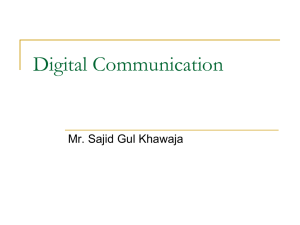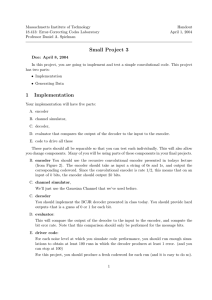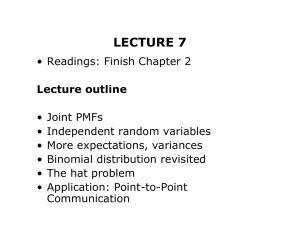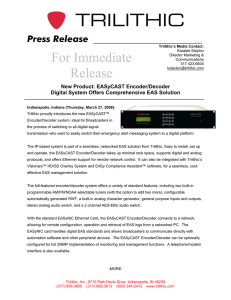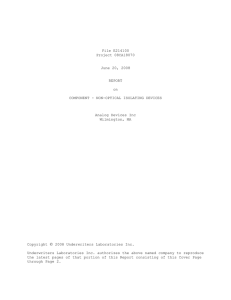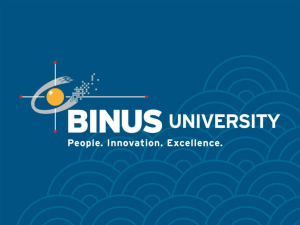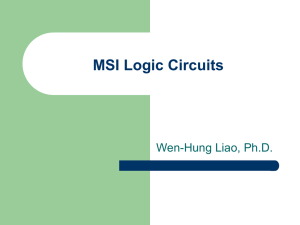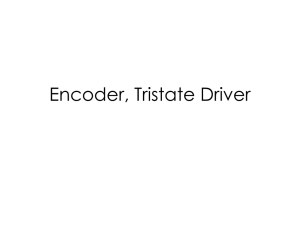User:Er.Tanu/Temp/Study Material
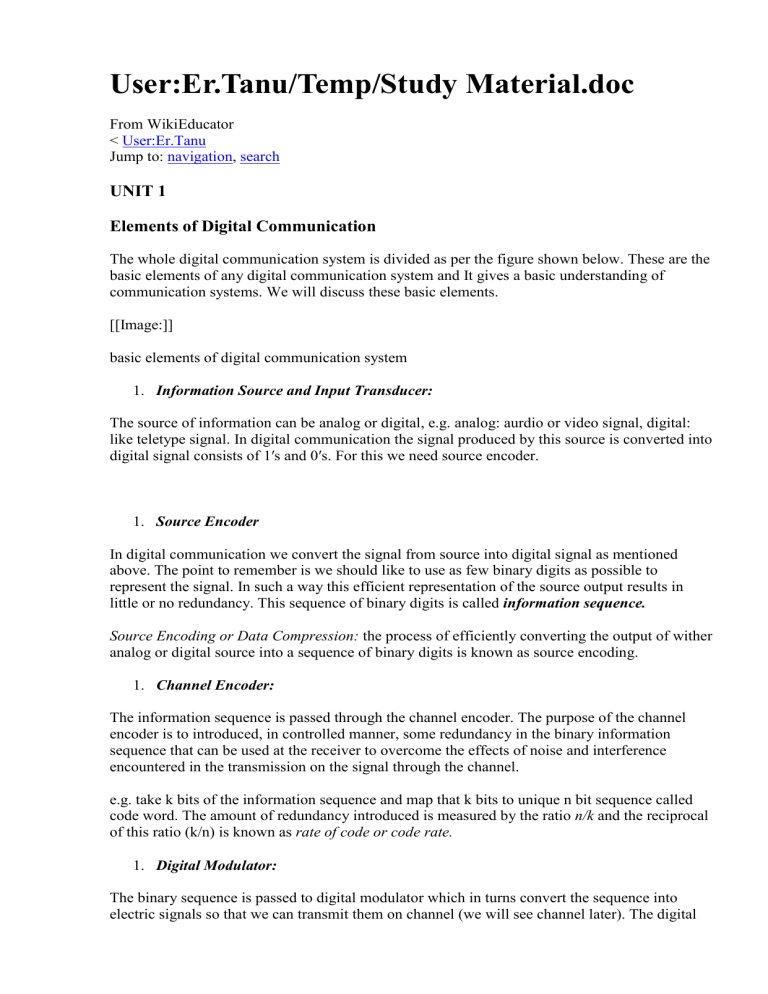
User:Er.Tanu/Temp/Study Material.doc
From WikiEducator
< User:Er.Tanu
Jump to: navigation , search
UNIT 1
Elements of Digital Communication
The whole digital communication system is divided as per the figure shown below. These are the basic elements of any digital communication system and It gives a basic understanding of communication systems. We will discuss these basic elements.
[[Image:]] basic elements of digital communication system
1.
Information Source and Input Transducer:
The source of information can be analog or digital, e.g. analog: aurdio or video signal, digital: like teletype signal. In digital communication the signal produced by this source is converted into digital signal consists of 1′s and 0′s. For this we need source encoder.
1.
Source Encoder
In digital communication we convert the signal from source into digital signal as mentioned above. The point to remember is we should like to use as few binary digits as possible to represent the signal. In such a way this efficient representation of the source output results in little or no redundancy. This sequence of binary digits is called information sequence.
Source Encoding or Data Compression: the process of efficiently converting the output of wither analog or digital source into a sequence of binary digits is known as source encoding.
1.
Channel Encoder:
The information sequence is passed through the channel encoder. The purpose of the channel encoder is to introduced, in controlled manner, some redundancy in the binary information sequence that can be used at the receiver to overcome the effects of noise and interference encountered in the transmission on the signal through the channel. e.g. take k bits of the information sequence and map that k bits to unique n bit sequence called code word. The amount of redundancy introduced is measured by the ratio n/k and the reciprocal of this ratio (k/n) is known as rate of code or code rate.
1.
Digital Modulator:
The binary sequence is passed to digital modulator which in turns convert the sequence into electric signals so that we can transmit them on channel (we will see channel later). The digital
modulator maps the binary sequences into signal wave forms , for example if we represent 1 by sin x and 0 by cos x then we will transmit sin x for 1 and cos x for 0. ( a case similar to BPSK)
1.
Channel:
The communication channel is the physical medium that is used for transmitting signals from transmitter to receiver. In wireless system, this channel consists of atmosphere , for traditional telephony, this channel is wired , there are optical channels, under water acoustic cahnenls etc. we further discriminate this channels on the basis of their property and characteristics, like
AWGN channel etc.
1.
Digital Demodulator:
The digital demodulator processes the channel corrupted transmitted waveform and reduces the waveform to the sequence of numbers that represents estimates of the transmitted data symbols.
1.
Channel Decoder:
This sequence of numbers then passed through the channel decoder which attempts to reconstruct the original information sequence from the knowledge of the code used by the channel encoder and the redundancy contained in the received data
The average probability of a bit error at the output of the decoder is a measure of the performance of the demodulator – decoder combination. THIS IS THE MOST IMPORTANT
POINT, We will discuss a lot about this BER (Bit Error Rate) stuff in upcoming notes
1.
Source Decoder
At the end, if an analog signal is desired then source decoder tries to decode the sequence from the knowledge of the encoding algorithm. And which results in the approximate replica of the input at the transmitter end
1.
Output Transducer:
Finally we get the desired signal in desired format analog or digital.
The point worth noting are :
1.
the source coding algorithm plays important role in higher code rate
2.
the channel encoder introduced redundancy in data
3.
the modulation scheme plays important role in deciding the data rate and immunity of signal towards the errors introduced by the channel
4.
channel introduced many types of errors like multi path, errors due to thermal noise etc.
5.
the demodulator and decoder should provide high BER.
In the coming articles of the series we will explore more the different elements along with their characteristics, types, and also analyze the results of simulations. The next post will be on communication channels and their characteristics and also their mathematical models.
Thankyou.
Retrieved from
" http://wikieducator.org/index.php?title=User:Er.Tanu/Temp/Study_Material.doc&oldid=60262
9 "
Navigation menu
Personal tools
Log in
Request account
Namespaces
User page
Discussion
Variants
Views
Read
View source
View history
Actions
Search
Search Go
Navigation
Main Page
Recent changes
Help
Practice editing
Community
Community portal
Web chat
Mailing list
Print/export
Create a book
Download as PDF
Printable version
Tools
What links here
Related changes
User contributions
Logs
Upload file
Special pages
Permanent link
Page information
This page was last modified on 4 September 2010, at 09:19.
This page has been accessed 46 times.
Content is available under the Creative Commons Attribution Share Alike License unless otherwise noted.
Privacy policy
About WikiEducator
Disclaimers
